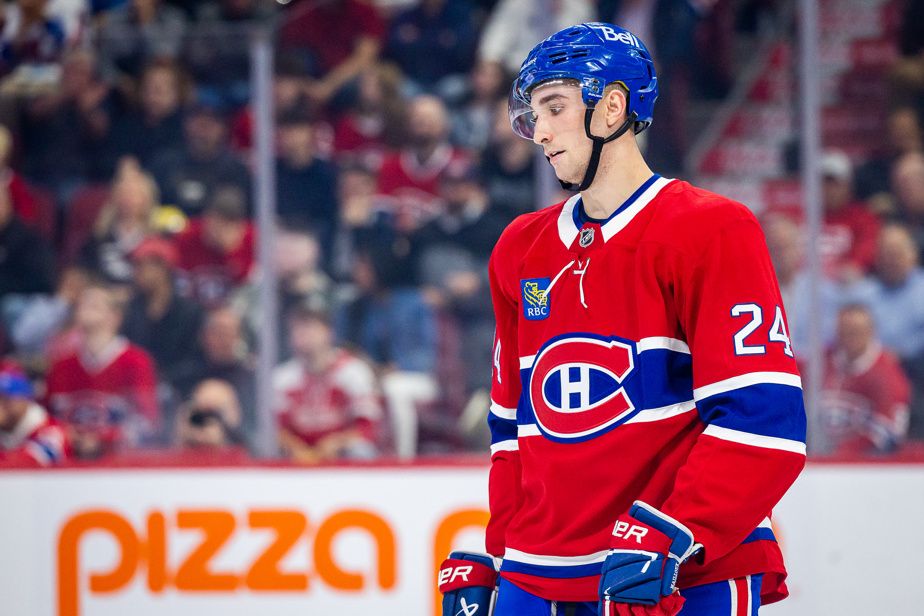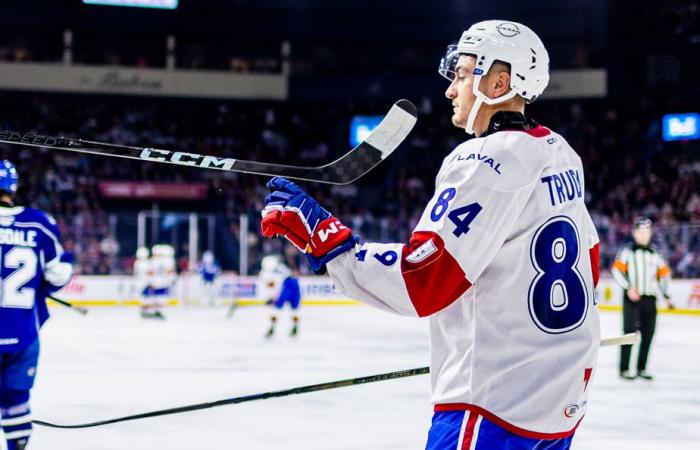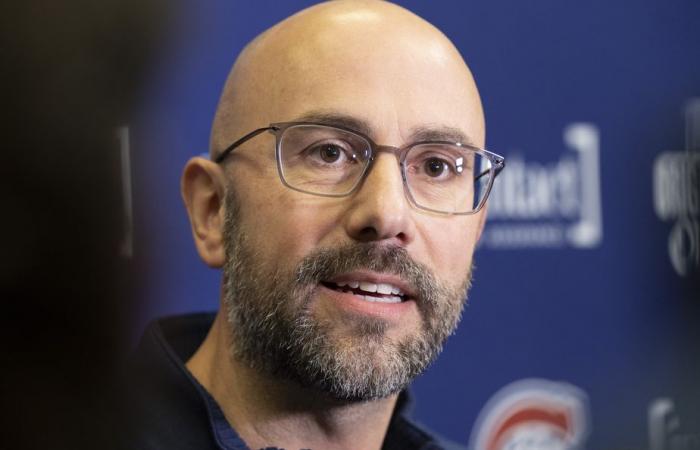The Canadian has the worst defense in the NHL since the start of the season. In the circumstances, the defensive system of play was heavily criticized. However, 21 km to the north, a team is having great success using the same structure in its territory.
Posted at 1:25 a.m.
Updated at 8:00 a.m.
Seven wins, just one loss: the Laval Rocket is off to a dream start to the season. Pascal Vincent’s men have only allowed 16 goals in seven games, which puts them sixth in the league. Among the Laval defenders, none have a negative differential.
This means that the system widely criticized in Montreal seems to operate about fifteen stations north on the orange line.
“We teach the same things [à Montréal qu’à Laval] », Explains Rocket head coach, Pascal Vincent.
“It’s not complicated: there is the man-to-man system, there is zone protection and there is the hybrid system. There aren’t millions of systems in hockey,” underlines Vincent.
PHOTO PATRICK SANFAÇON, LA PRESSE ARCHIVES
Laval Rocket head coach Pascal Vincent
The hybrid system is favored within the organization. Concretely, when the puck is at the top of the territory, each player is called upon to cover an opposing skater. When it is in the back of the territory, players are asked to switch to zone defense. Each skater must therefore cover part of the ice, trying to recover the puck quickly to restart the attack.
Although it may seem complicated on paper, this system is not nuclear physics. At least, not for Rocket defenseman William Trudeau, who played in a “very similar” defensive scheme with the Charlottetown Islanders.
In Laval, it’s a really good job. We manage to kill games quickly in our zone, we are able to counter-attack quickly.
William Trudeau
“When we’re all on the same page, all five guys on the ice, it makes it easier,” he adds.
The system still requires you to be more “alert on the ice,” he adds. “In a man-to-man system, you just follow your player, it’s not complicated. There, you definitely have to think about where the puck is on the ice. »
If William Trudeau praises the hybrid system, Logan Mailloux walks on eggshells when asked about it.
“I’ll be honest, it’s a difficult question for me,” he admits, after a 10-second pause. It’s different for all teams. I’ll be honest, this is a tough question. I don’t do systems. I don’t know, to be honest it’s hard to answer. Things are going well here, so… yeah. »
“It’s a lot of learning for me in my first year here,” said Adam Engstrom, who is playing his first games in North America, after starting his career in Sweden. I think we still need to work on some aspects, but it works. »

PHOTO DOMINICK GRAVEL, ARCHIVES LA PRESSE
Logan Mailloux
In Laval, Logan Mailloux is the only defender to have worn the Canadian colors this season. “I don’t know if you’ve noticed, but there are similarities and differences [entre les systèmes du Rocket et du Canadien] “, he indicated. His coach Pascal Vincent corrected him a few minutes later: the defensive systems of the two teams are identical. This is for the sake of uniformity. To ensure that players recalled to the National League are not too disoriented.
A system that can be learned
For the Canadian, Nick Suzuki admitted a week ago that “few guys” had played in a hybrid system before, and that some of them were in the process of “learning” its facets.
Since the start of the season, CH players have seemed hesitant in their zone. Martin St-Louis noticed it.
“There are some hesitations that I can help with. But if it’s black or white, there should be no hesitation,” he said on October 25.
If you don’t understand when it’s black or white, you can’t play in this league. In my eyes, you have to have rhythm and a willingness to work in the defensive zone.
Martin St-Louis, head coach of the Canadiens
“The league is moving” towards the adoption of the hybrid system in defense, added St-Louis. The system was notably adopted by the Florida Panthers, reigning Stanley Cup champions.
Whether the system is to blame or not, the Canadian’s defensive flaws are obvious. As of 1is November, the team had allowed 4.18 goals per game, tied for last in the league with the Colorado Avalanche. These setbacks are more than the result of chance, since the Canadian is second among the worst teams in terms of expected goals, with 31.3.
It is common to see the Habs bottled up in its territory. As a direct result, the team is fifth in shots allowed per game, at 32.6.








